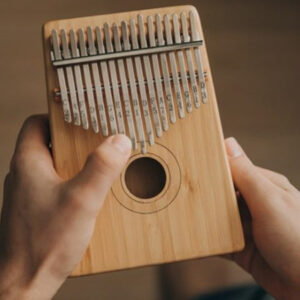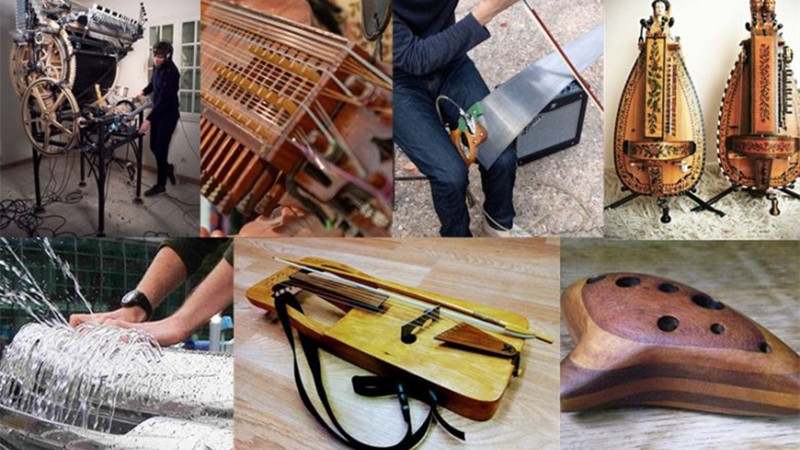
Tired of all the boring instruments everyone tries to get you to play? Looking to play something unique or make a name for yourself on the music scene? Weird instruments are the way to go.
Whether it’s the unusual shape or the mechanics behind how musical notes are produced, weird instruments are weird for a reason. They are often more difficult to play than everyday instruments many musicians familiarize themselves with. If you can keep up with a weird instrument, you’ll reach the top of your field in no time.
13 Weird Instruments
These 13 instruments may sound like they’re made up, but they can be found all around the world or throughout time. Some you’ve maybe even seen before without realizing.
1. Theremin
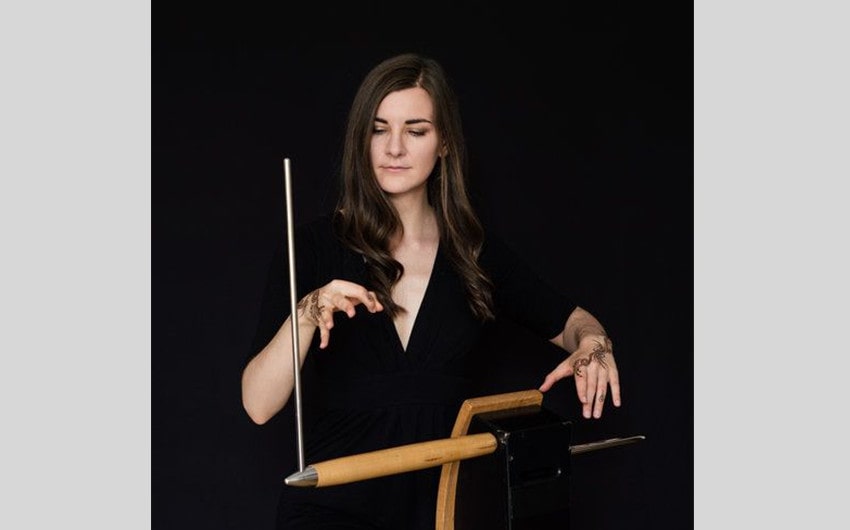
Image source: Pinterest
Easily one of the most recognizable instruments on this list, the theremin is still a marvel a century after its invention. The theremin came about because of Soviet-sponsored research into proximity sensors. Whether the research was for some military application or not is unknown but the world received the special sounds of the theremin either way.
The wavy, electronic sounds of the theremin are often included in eerie or spooky soundtracks. Playing these notes with such clarity and precision is difficult for many people. This is because one hand controls the pitch using the upright theremin baton while the other hand controls volume with the loop on the other side. Without a clear indication of where notes are, you must have perfect pitch or an extremely trained ear to play well.
If the theremin isn’t weird enough for you, someone made an even more bizarre and somewhat twisted version of the theremin known as the Badgermin. It’s functionally identical to the theremin but the inner workings of the instrument are housed inside a taxidermied badger.
2. Nyckelharpa
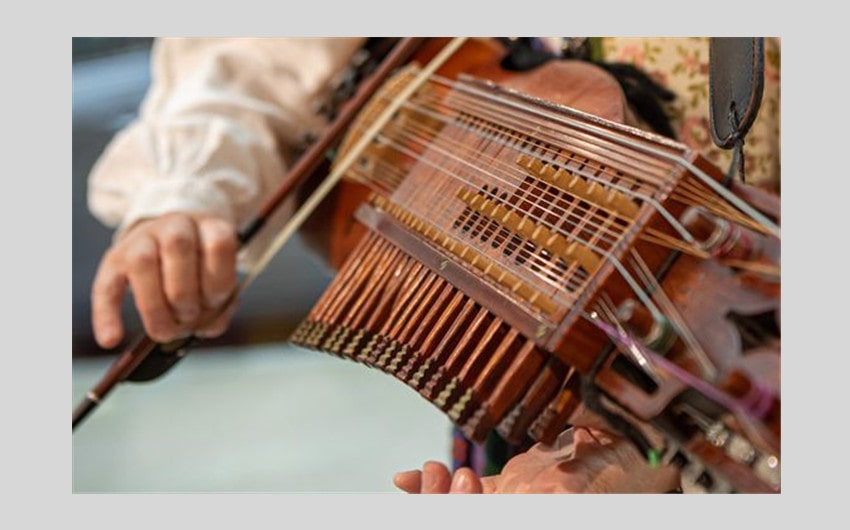
Image source: Pinterest
A Swedish instrument with at least 600 years of rich history, the nyckelharpa flies under the radar of many people when discussing musical instruments. Although it sounds and plays much like a fiddle, the nyckelharpa incorporates several keys that slide under the strings to change notes.
While many mainstream stringed instruments have between three and eight strings, the nyckelharpa features a total of 16 strings. These strings are divided into drone strings, melody strings, and sympathetic strings.
3. Ocarina
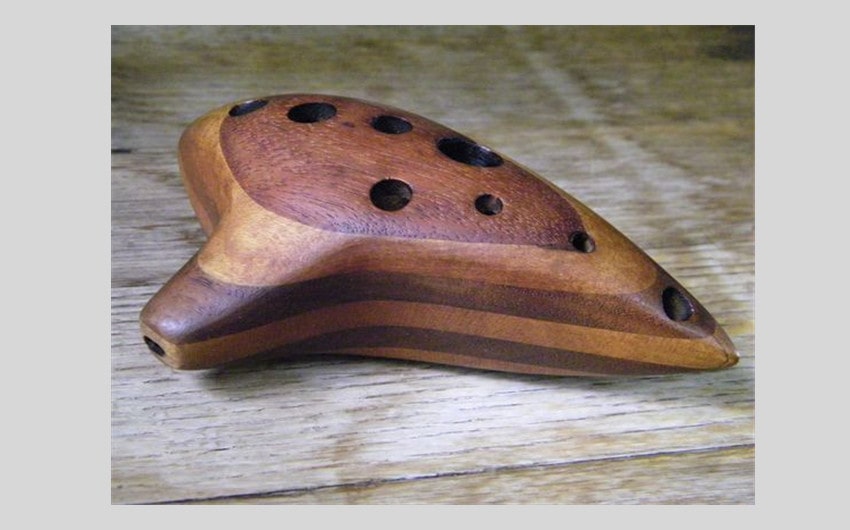
Image source: Pinterest
Another widely recognizable but weird instrument is the ocarina. This vessel flute can be made of a wide variety of materials including ceramics, glass, bone, metal, and wood. A typical ocarina features anywhere between 4 and 12 finger holes to create notes.
Evidence of the earliest ocarinas or progenitors of ocarinas suggests that this instrument existed as far back as 12,000 years ago. What’s even more interesting is that the ocarina has roots in multiple cultures across the globe, from ancient China to the Aztecs.
4. Crwth
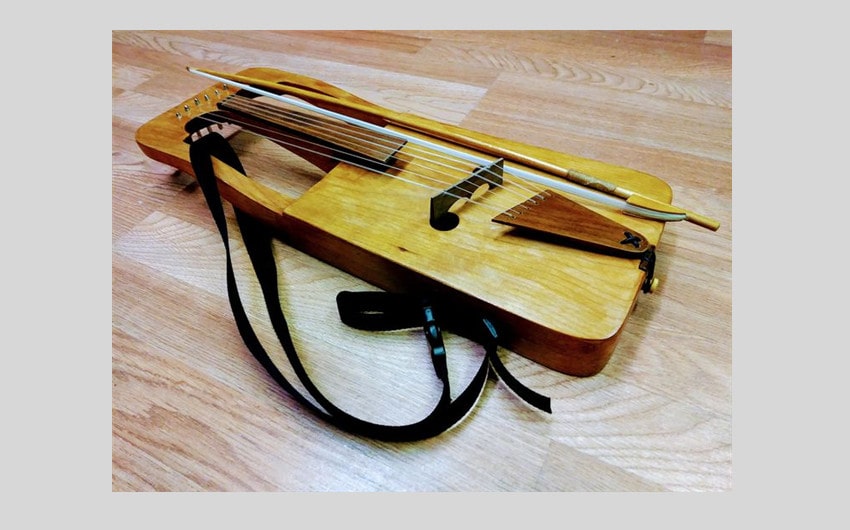
Image source: Pinterest
Pronounced as “krooth”, this Welsh instrument is a type of bowed lyre. Because of its shape and how it is played, it’s often compared to the violin. Unlike the violin, the crwth is played by plucking the strings instead of using a bow.
When playing the crwth, the bottom rests squarely on the chest while a strap from the instrument is slung around the neck to hold it perpendicular to the trunk of the player. One hand holds the bow and the other comes around the back of the instrument to pinch the strings and create different notes.
Unfortunately, the crwth has faded into relative obscurity even within its country of origin. A few dedicated individuals are trying to revive the instrument and its tunes but many of the historic folk pieces are lost to time.
5. Marble Machine

Image source: Pinterest
Building and using marble machines or contraptions is usually for entertainment more than for music. The Swedish band Wintergatan took a creative approach and created a musical instrument from a marble machine.
2,000 marbles that are constantly released and replenished by a hand-crank strike a variety of components to create a one-person band. Listening to music produced by the marble machine you notice the sounds of a vibraphone, parts of a drum kit, and a bass guitar.
If you want to impress someone with a marble machine of your own, you’ll be hard-pressed to get your hands on one. Even though Wintergatan themselves provide computer-aided design files for making a Marble Machine X, you’ll still need the technical know-how to build the instrument from scratch.
6. Thoramin

Image source: Pinterest
The thoramin’s cool name comes from a loose association with the Norse god of lightning and thunder, Thor. Similarly, the musical instrument is known as a zeusaphone in relation to the ancient Greek god of thunder. These names are used because arcs of electricity from a solid state Tesla coil are used to create notes.
You may recognize the instrument from its brief appearance in the 2010 movie The Sorcerer’s Apprentice. Aside from that, the instrument has seen widespread use despite being relatively safe to operate. This may be because the sound waves generated by the thoramin are square-like which makes the notes sound too rigid for some people’s liking.
If you’re interested in learning about the physics behind how this type of Tesla coil works, there is a surprisingly detailed work from Max Simmonds, a Plymouth University student, posted online. Not only does he explain how the Tesla coil works, but he also provides a list of the materials you need, the code he uses, and more so you can create your own singing Tesla coil.
7. Vegetables

Image source: Pinterest
You read that right. Fresh vegetables that anyone can get at the grocery store have been turned into musical instruments.
You might think that only a few vegetables can be transformed into a limited set of instruments. This isn’t the case at all. Some of the most common vegetables include zucchini and other squashes, peppers, and carrots. Through research and creativity, these veggies become drums, flutes, violins, xylophones, and more.
Perhaps the most influential group of vegetable musicians is the Vienna Vegetable Orchestra. One of their members is also a cook, so after each performance, the instruments are made into soup for the audience. This makes each event one-of-a-kind from the appearance and sound of each vegetable to the flavor of the soup with little to no waste.
8. Hydraulophone

Image source: Pinterest
If you can’t get enough cool water in the summer, try your hand splashing around with a hydraulophone. This instrument operates on the principles of hydraulics and usually uses water to produce musical notes.
A constant flow of water pours forth from multiple holes that a player can block. Stemming the water flow diverts it to an alternate pathway that then generates the music you hear. These pathways sometimes use reeds like in woodwind instruments, while others are reedless and have no moving parts so they don’t wear out.
Not weird enough for you? There are specific cold-weather hydraulophones that are built into hot tubs. If you’re playing this hydraulophone, you sit inside the hot tub while playing the instrument. This makes it one of the few, or only, instruments where it is acceptable to be in a swimsuit for a performance.
9. The Serpent
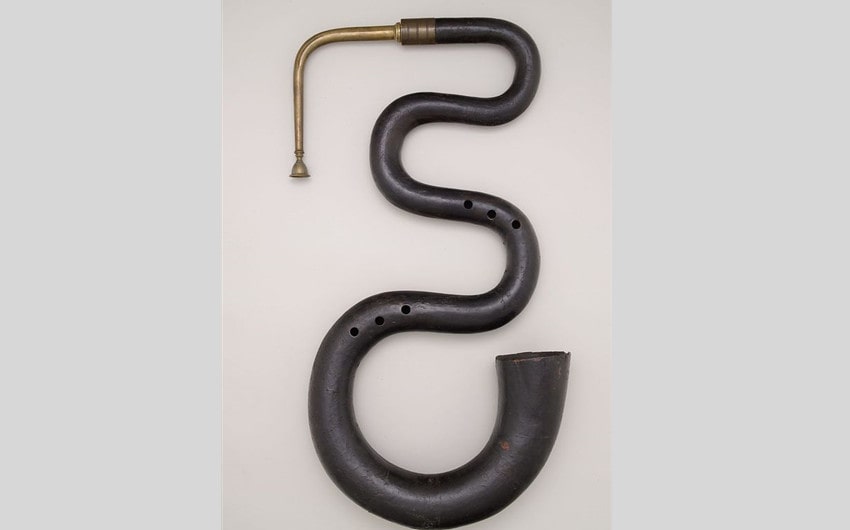
Image source: Pinterest
Can you guess what shape the serpent looks like? This winding instrument is a 16th-century brass instrument but the exact period of its invention and origin are still debated. An account by French historian Jean Lebeuf claims the instrument was invented in 1590 by French clergymen in Auxerre, France. Others say it likely came about in 16th century Italy since closely related S-shape cornetts were being used there.
Wherever the serpent was invented, practically no one was using the instrument by the start of the 20th century. Since then, the serpent has had a sporadic revival effort from the 1960s to the present day.
A musical instrument going extinct doesn’t necessarily make it weird though. Aside from the unique shape, what makes the serpent fascinating is that it doesn’t have a set range of notes it can play. Depending on the instrument itself and who is playing it, the range can be extended a fair amount.
10. Hurdy-gurdy
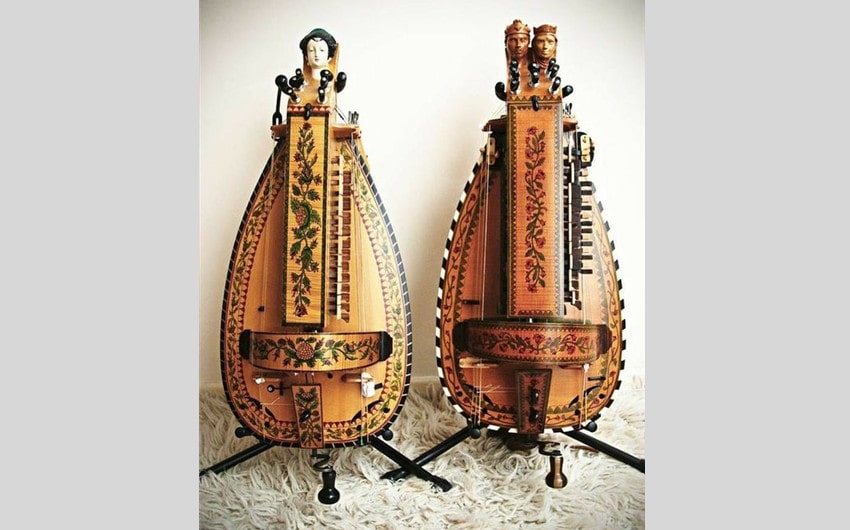
Image source: Pinterest
The hurdy-gurdy is a string instrument similar to the nyckelharpa but found more widespread use across medieval Europe. Instead of using a bow, a hand-crank turns a rosined wheel that rubs against the strings of the hurdy-gurdy. A keyboard is used to change the pitch of the strings as the crank is continuously turned.
Because hurdy-gurdies typically have one or more drone strings that constantly produce a single sound along with whatever melody a musician plays, the hurdy-gurdy is often likened to the bagpipes. Some ensembles even use their sounds interchangeably.
Some notable uses of the hurdy-gurdy in popular media include the soundtrack of the TV series The Walking Dead and as a part of sea shanties in Rare’s and Microsoft Game Studios’ Sea of Thieves.
11. Musical Saw
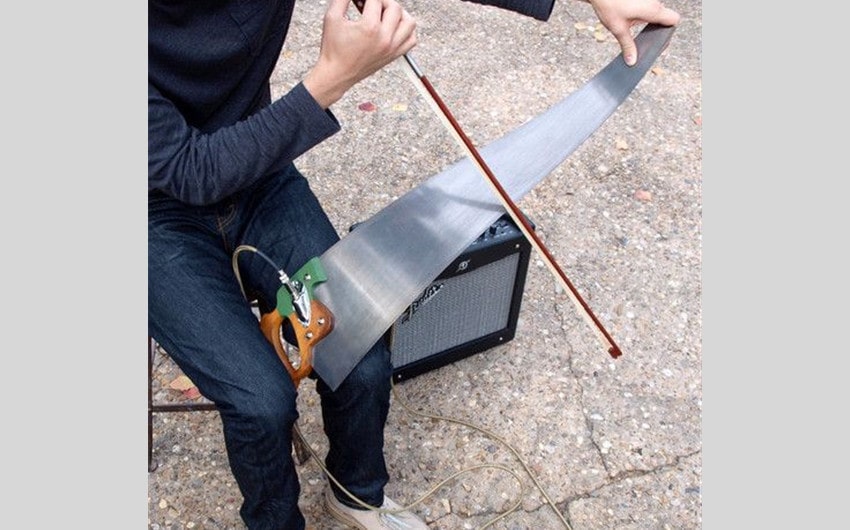
Image source: Pinterest
The humble hand saw is a versatile instrument in the right hands. Some musical saws are made for music but any hand saw from a hardware store can make music. If you ever decide that learning to play music on the saw is too hard, you can still use it for cutting wood.
To play the saw, you bend the blade into a S-shaped curve. The flat area in the middle is the sweet spot. Beginner sawists may find hitting this area with a percussion mallet is easier to start with and swap to a bow drawn across the smooth edge as they gain experience.
You have to be careful when playing the musical saw. It may be uncommon but cuts and scrapes aren’t outside the realm of possibility since the teeth of the saw are oriented towards the sawist when playing.
12. Jew’s Harp
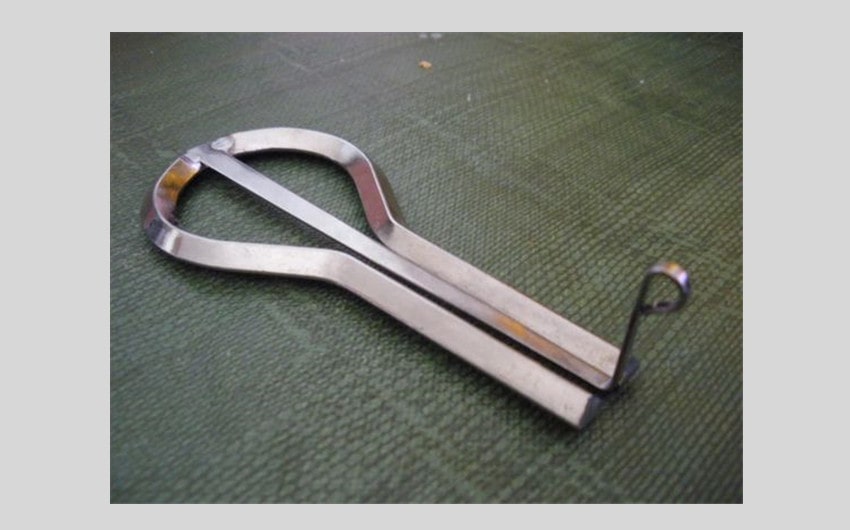
Image source: Pinterest
Also called a jaw harp, mouth harp, or guimbard, the Jew’s harp is a small piece that inserts into lips and uses the mouth as a resonator to amplify the volume. Even though it’s called the Jew’s harp, it has no relation to the Jewish people and is thought to originate from Siberia.
The Jew’s harp is difficult to play despite having one moving part. This is because a large part of playing the Jew’s harp comes from how you hold it in your mouth. You cannot allow the Jew’s harp frame to rest on the teeth and you cannot close your lips such that the movement of the reed in the middle is restricted. Advanced playing techniques involve breathing in and out as you pluck the reed or even changing the shape of the mouth to produce new sounds.
13. Otamatone

Image source: Pinterest
Synthesizers are widely used in the music industry but few come in such a compact and odd package. The otamatone’s friendly face is squeezed with one hand to release a note that is determined by where you squeeze along the long neck with your other hand.
The instrument is popular online on video-sharing platforms like YouTube and TikTok where cover songs of mainstream media often garner thousands of views. Playing a full song on an otamatone can be quite difficult since there is no indication of where the notes are. The manufacturer of otamatones, Maywa Denki, even suggests taping specific areas once you find a note.
There are a variety of cute designs like the titular character Kirby from the Kirby video game series if a plain white otamatone doesn’t suit your tastes. Some of them require the use of the Otamatone Studio app which can limit their usability. This is especially true since the app works best on iOS devices.




